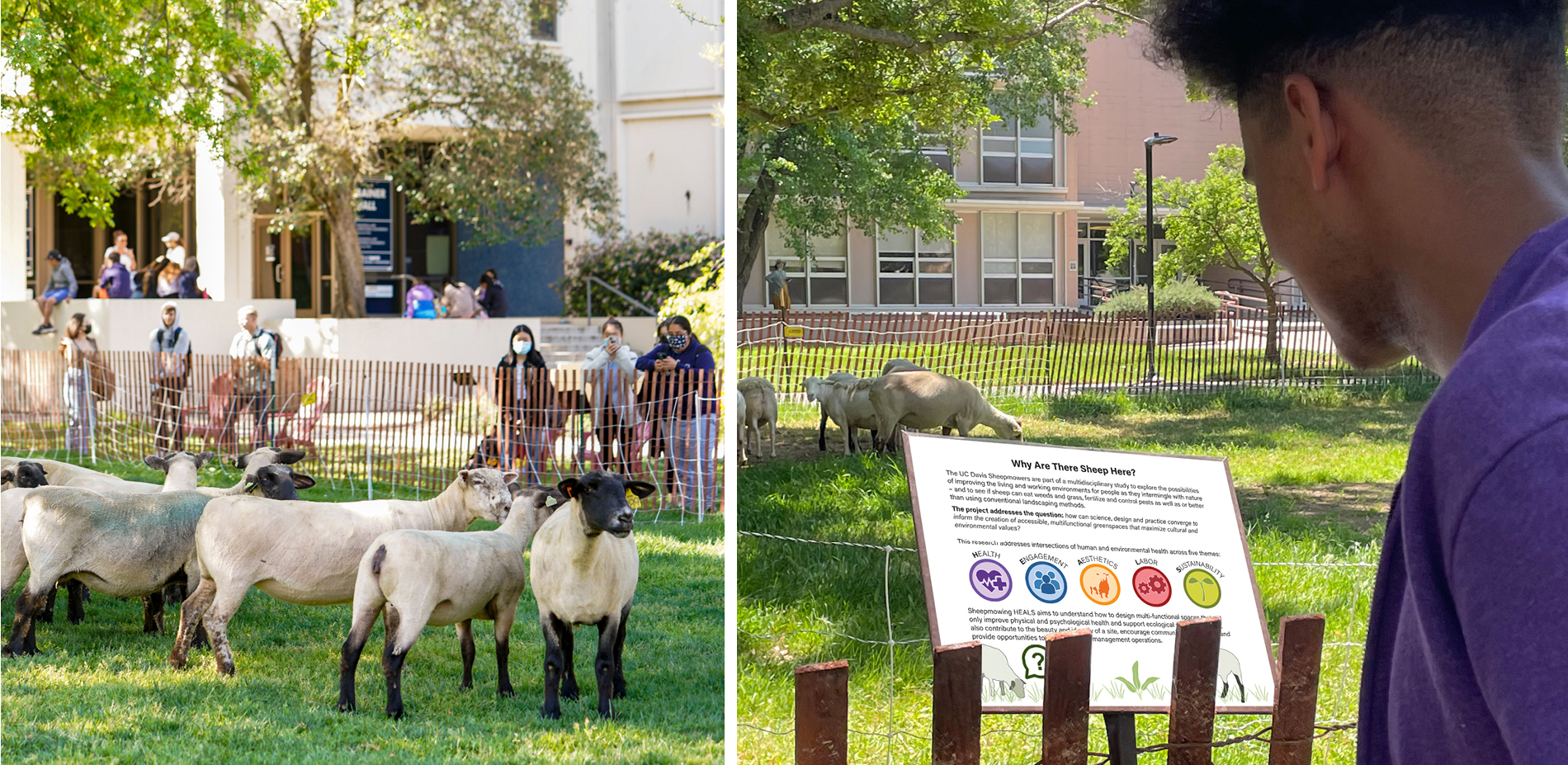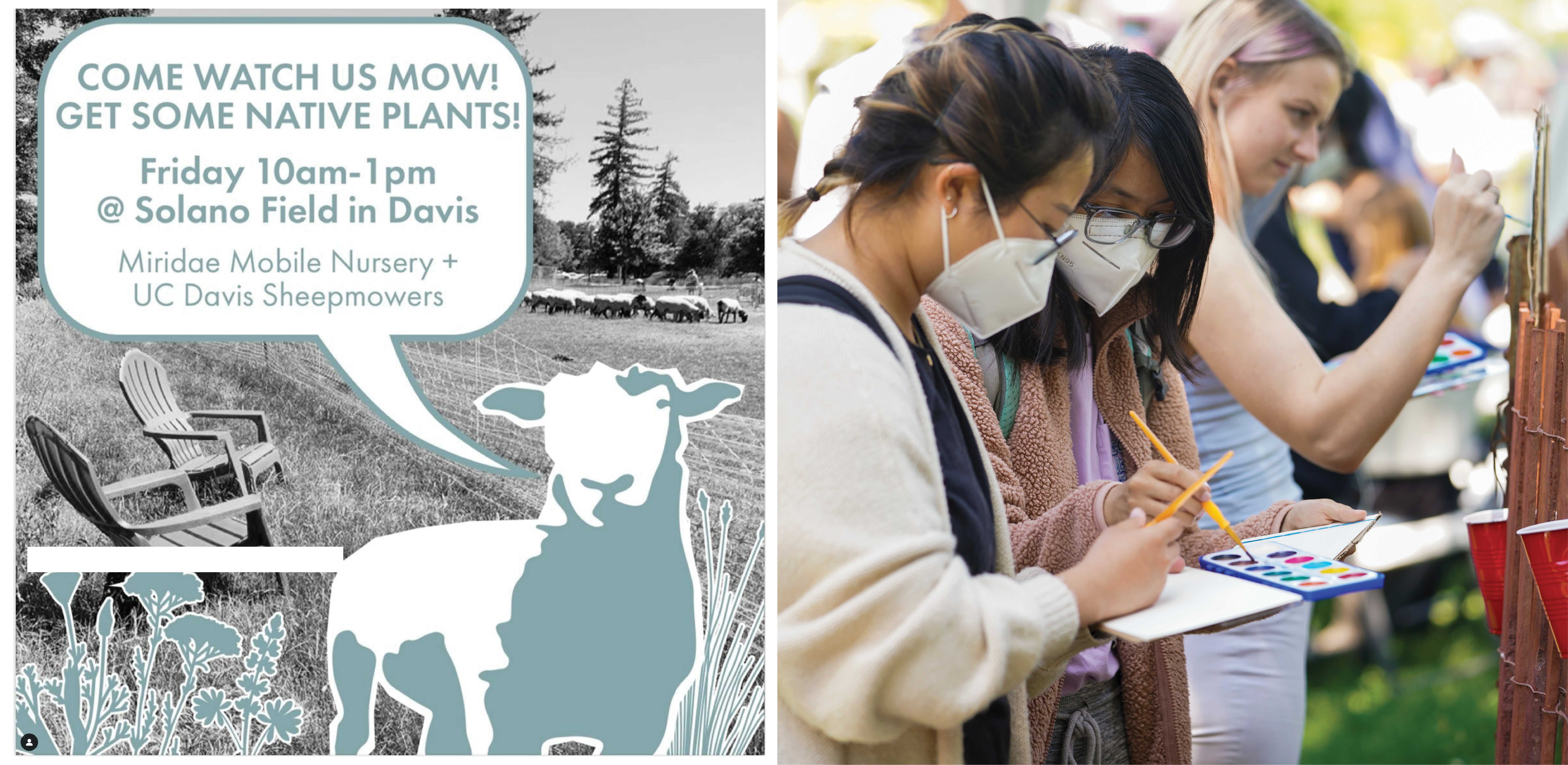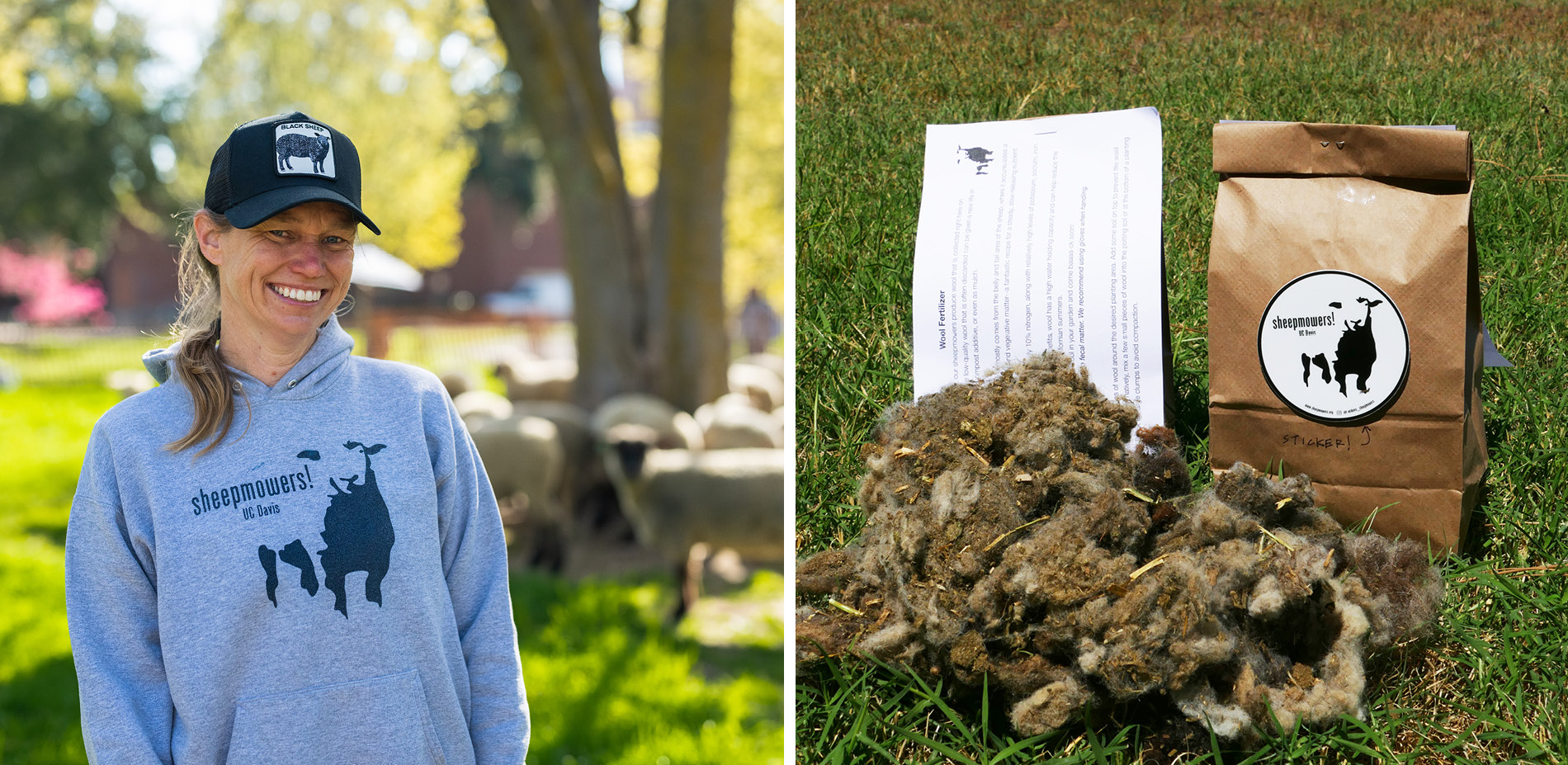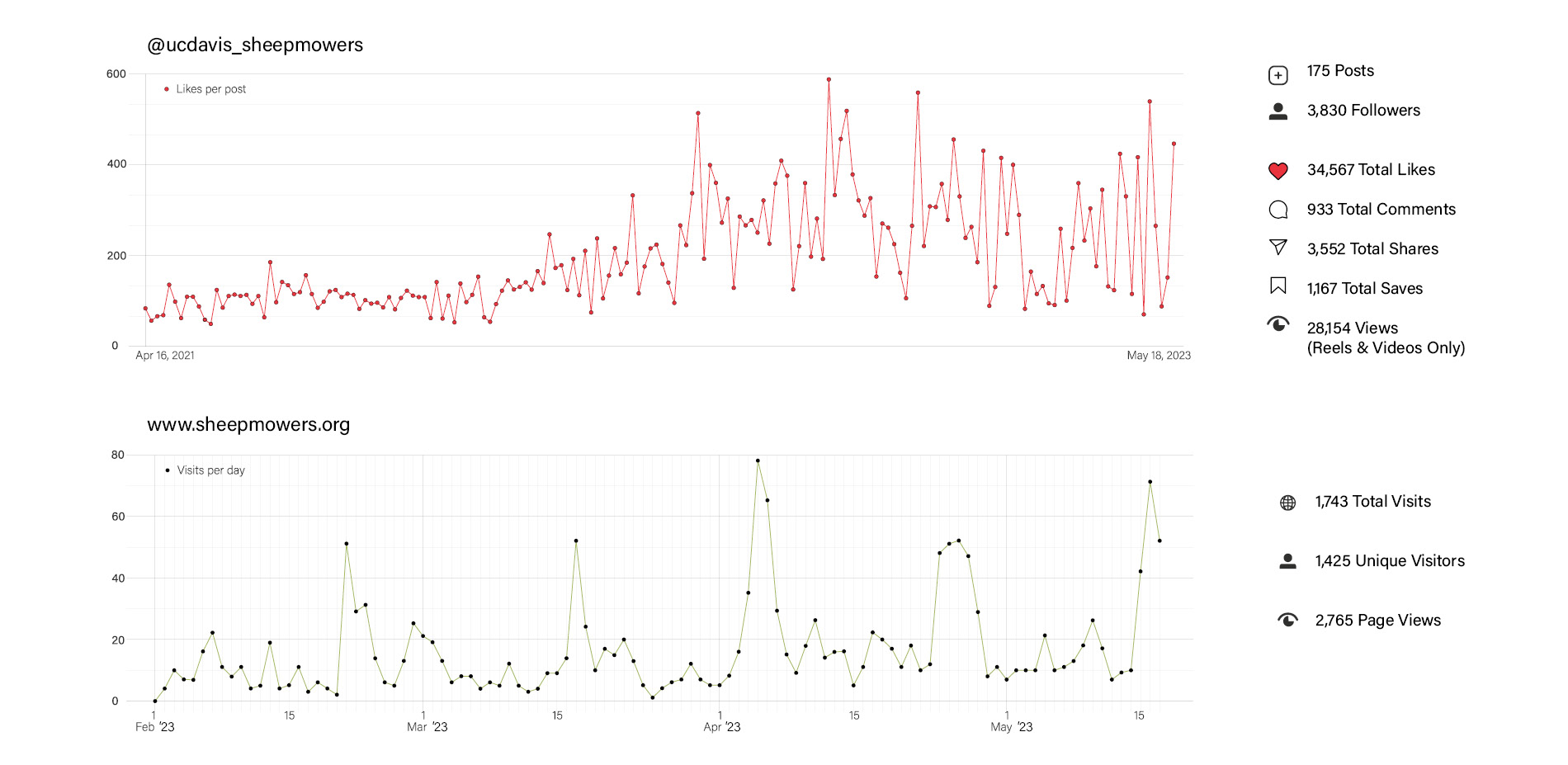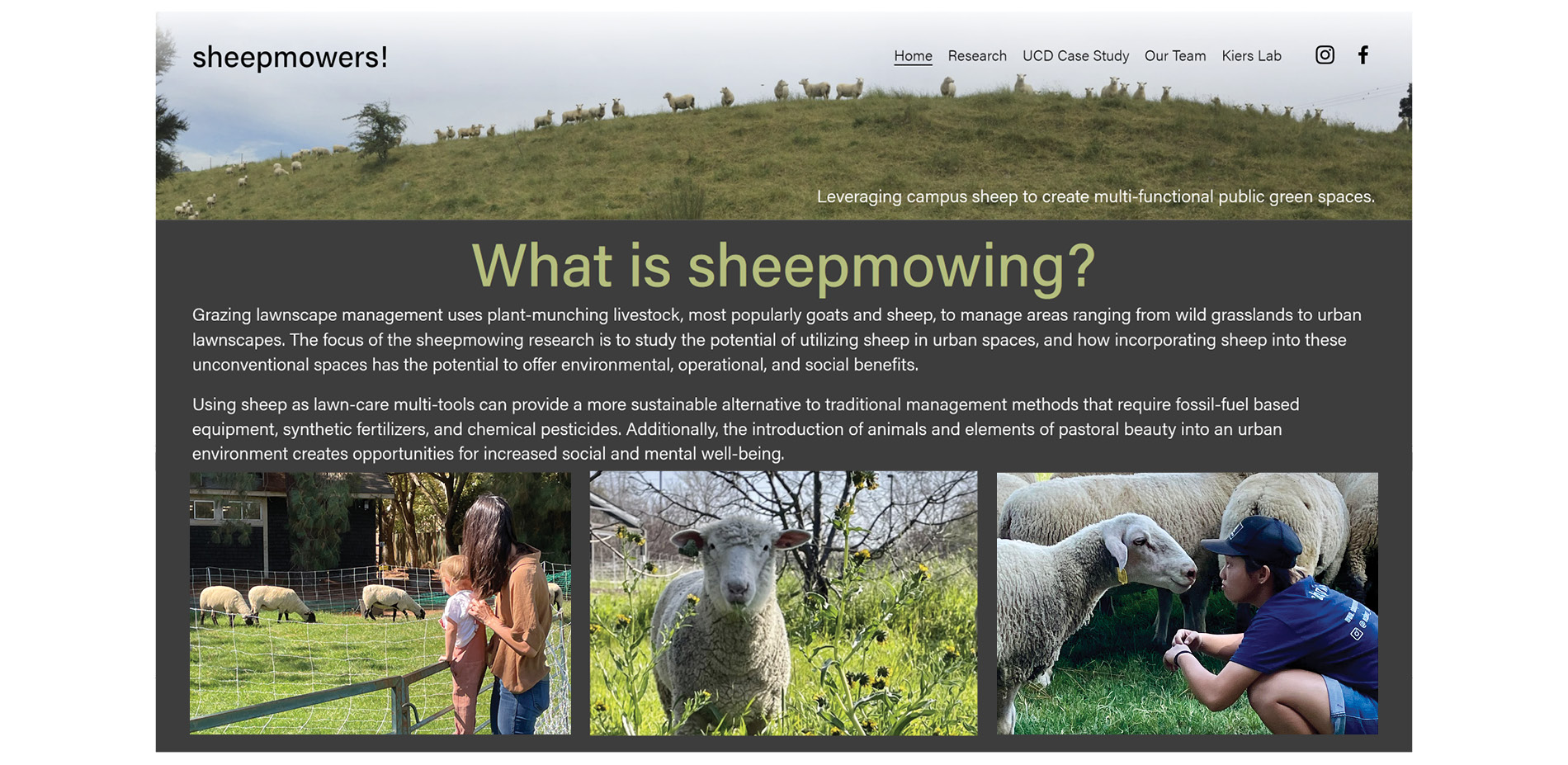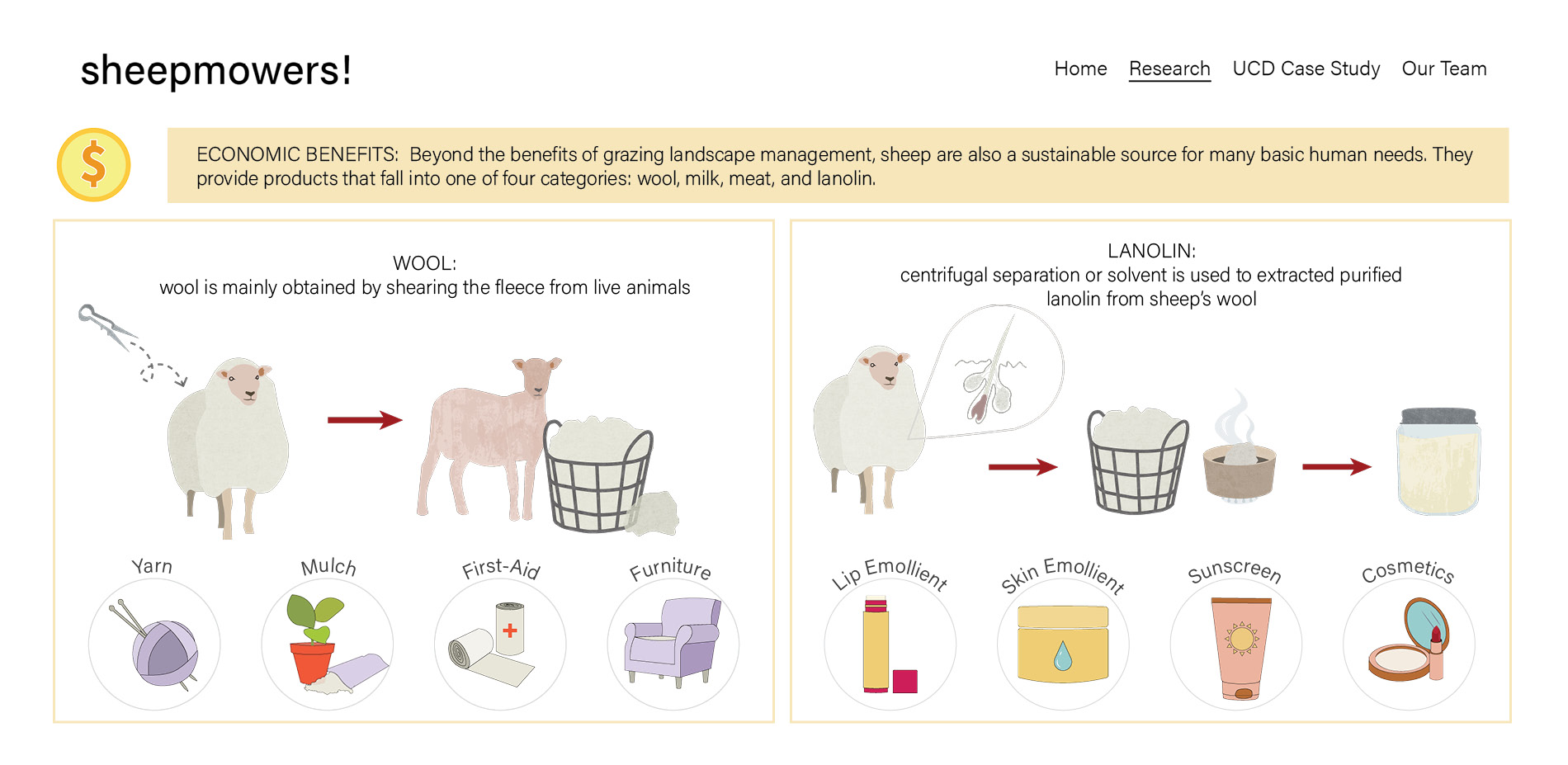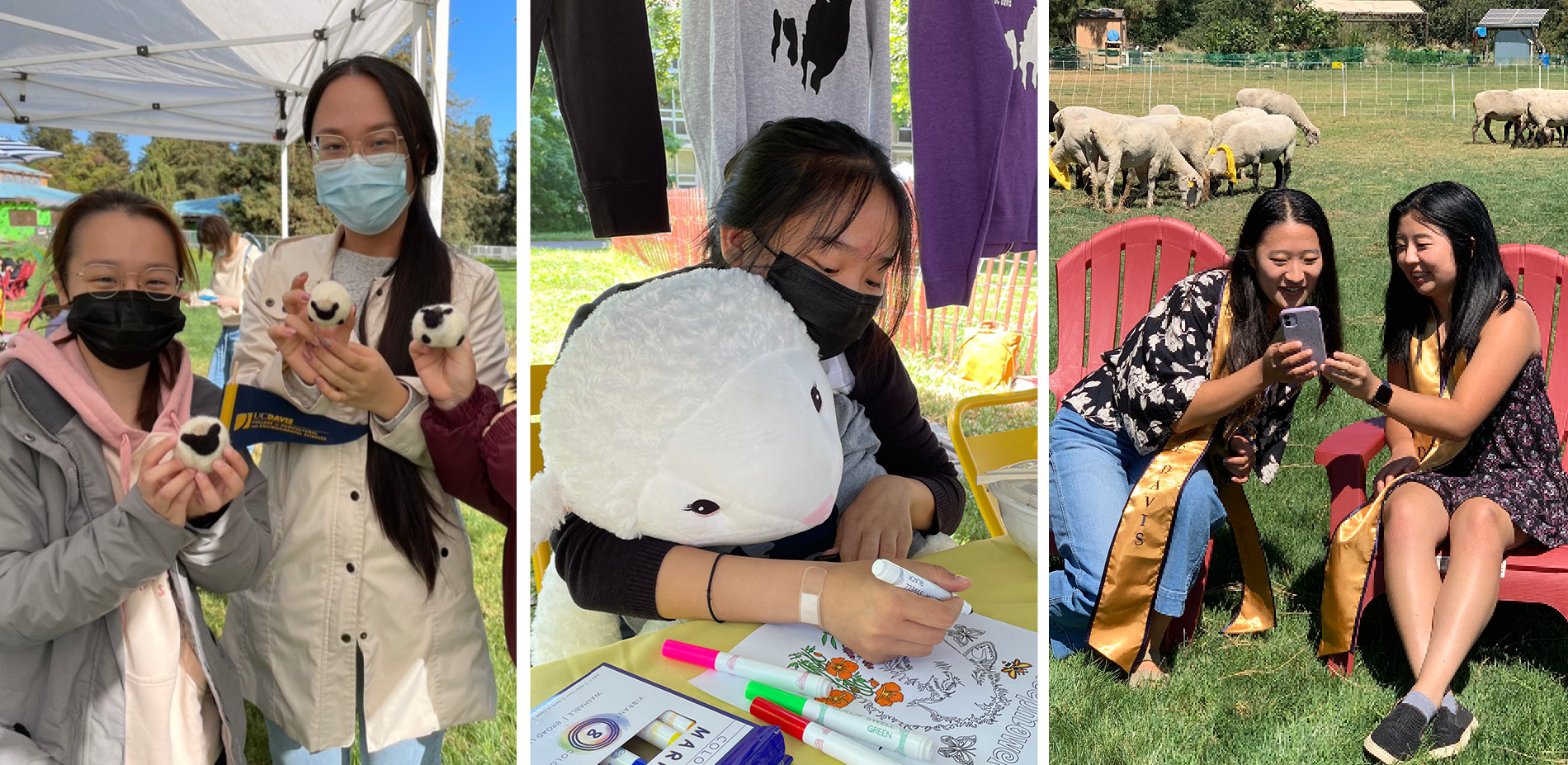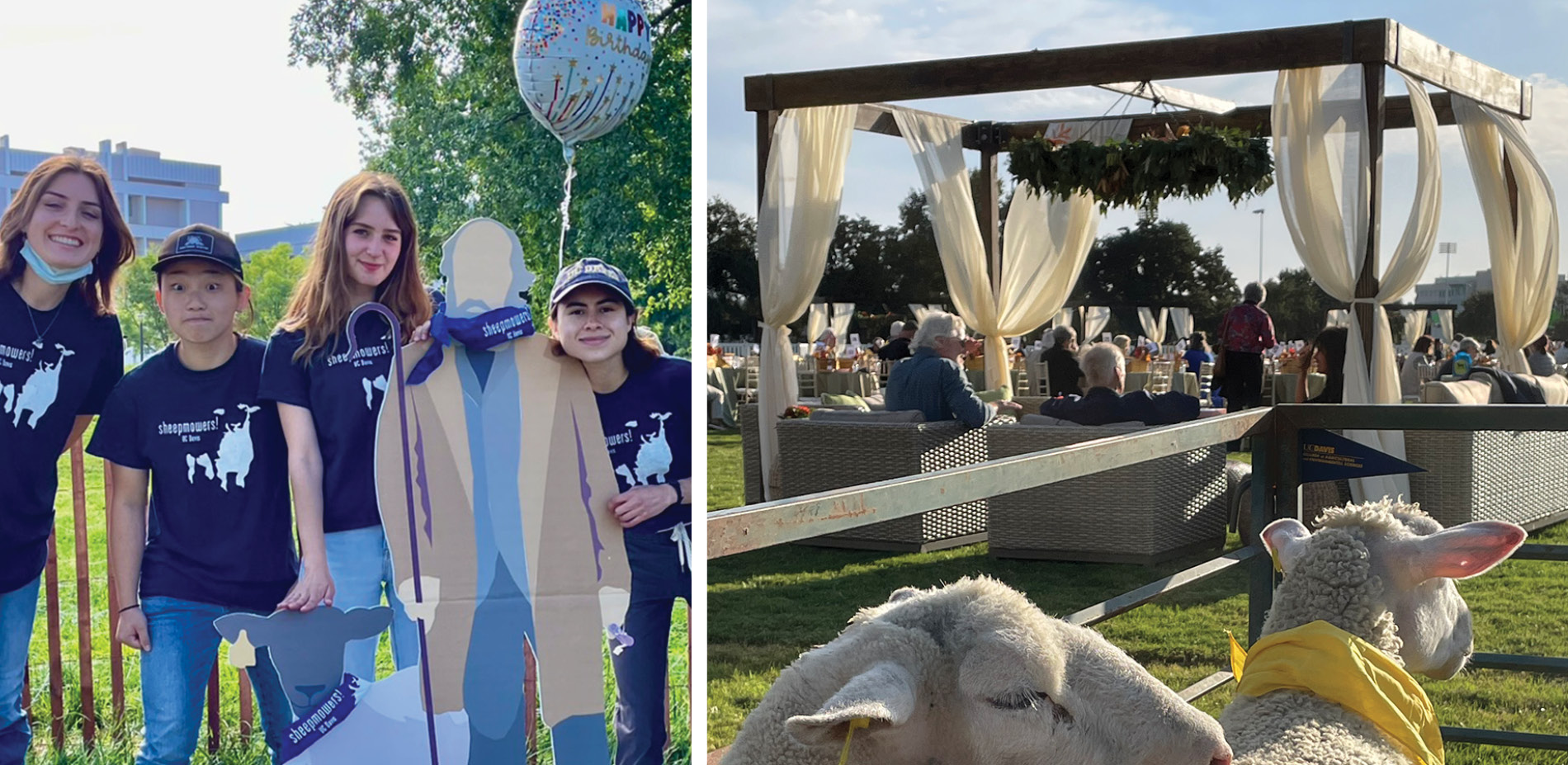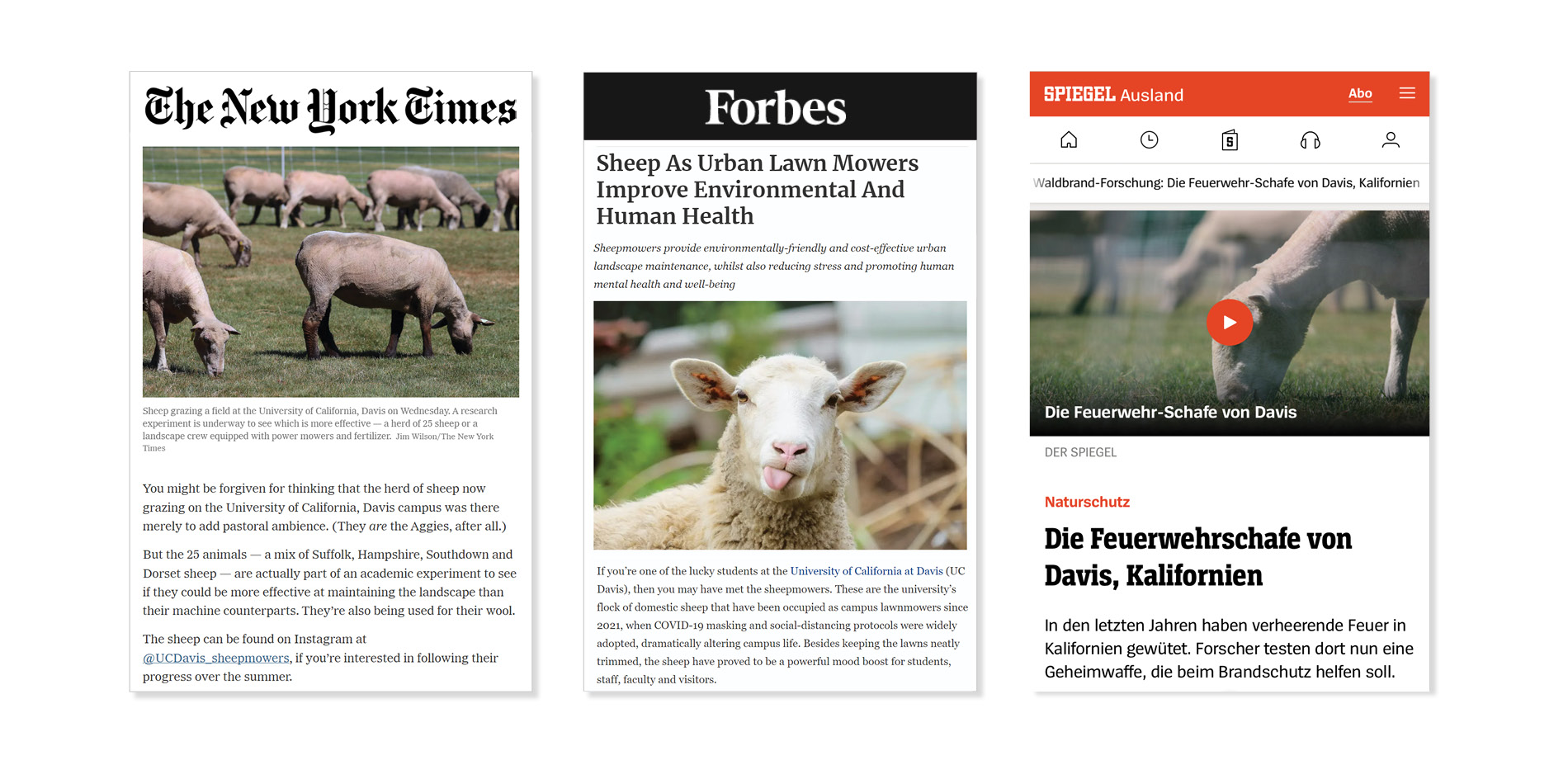The UC Davis Sheepmowers Project
Honor Award
Communications
Davis, California, United States
Chaoxun Yuan, Associate ASLA;
Faculty Advisors:
Haven Kiers, ASLA;
University of California, Davis (BSLA)
It is a creative, innovative, unique, informative, and a fun way to teach people about landscape architecture. Very engaging on multiple levels and with multiple means of communication. The team has done an amazing job at communicating the process and results. Integrates experience, social media, data, and ecological values well.
- 2023 Awards Jury
Project Credits
Kate Hayes
Design Principal and Landscape Architect, Miridae
Emily Schlickman
Assistant Professor of Landscape Architecture + Environmental Design, UC Davis
Billy Krimmel
Founder, Miridae
Project Statement
The Sheepmowers Project is a fun and engaging collaboration that brings sheep to the UC Davis campus to replace lawnmowers. The grazing sheep are the focus of community engagement and wellness activities, shepherded by students while trimming and fertilizing campus lawns. The collaborative group includes faculty, staff, students and the broader Davis/Sacramento community, and aims to be a model for other locations and organizations. Using sheep instead of lawnmowers reduces carbon emissions while simultaneously fertilizing and aerating the lawns. Engaging students as shepherds and creating an outdoor space to gather and watch sheep provided mental health & wellbeing benefits that were particularly profound during Covid-19 distancing.
Project Narrative
A component of the larger UC Davis Nature HEALS Initiative, the Sheepmowers Project is a transdisciplinary effort that breaks down traditionally siloed approaches to human and environmental health, focusing instead on a whole-systems approach to showcasing innovative solutions and encouraging applied collective action to achieve operational, environmental, and social benefits. The catchy phrase “Sheep vs. Lawnmower” serves as both an effective attention-grabbing headline and a pithy truth, that traditional grazing landscape management practices can often outperform current labor and maintenance practices, while additionally providing the HEALS (Health, Engagement, Aesthetics, Labor, and Sustainability) benefits that a lawnmower can’t.
Historically, sheep have played a critical role in maintaining landscapes (including mowing iconic lawns such as those in Central Park and the White House) to save manpower and reduce costs. Although this practice ultimately fell out of favor with the rise of technology, growing environmental concerns have contributed to a resurgence of interest in grazing. For the project, approximately 25 sheep (a mowing dream-team of Suffolks, Hampshires, Dorsets, Southdowns, and Dorpers) mow a fenced lawn area on campus every 2-3 weeks. Student researchers, who are also trained as shepherds, collect cultural and ecological data, create social media and website content documenting the project, and organize community grazing events. These events invite visitors to learn about the benefits of sheep through hands-on activities – participants can reduce stress by transforming balls of wool (soon to be sourced directly from Sheepmower fleeces) into felted sheep, celebrate the 200th birthday of Frederick Law Olmsted (an early adopter of sheep-grazed lawns) with watercolor painting, or decorate Sheepmower coloring pages during Take Our Children to Work Day. By-products of the sheep are also embraced - lawns are fertilized naturally, and soiled wool is used to enhance native horticultural plant production.
Launched during the COVID-19 pandemic in 2021, the Sheepmowers are rooted in community and connectivity, providing shared opportunities to rest, relax, and gather, while creating a space for communities to (re)connect with nature and place. The urban grazing installation reinforces a shared campus pride and contributes to the overall identity of the University. The sheep have been written into the script for campus tours, invited to a fundraising gala, and featured in the College of Agriculture’s holiday video card.
The impact of the Sheepmowers, however, extends far beyond the boundaries of campus. The wooly grazers have risen to fame with nearly 4000 Instagram followers, 1500 unique website viewers, and an average of 200 visitors a day when they are mowing. They have been covered by more than 50 media outlets in print (The New York Times, Reuters), television (CGTN China, Sky News, local news networks), radio (KCBS, 1010 Wins News) and online (Forbes, Der Spiegel, Science Daily). They’ve even inspired other campuses to start grazing programs - the University of Massachusetts recently debuted their own “Sustainable EweMass” project.
Now in its third season, the Sheepmowers Project continues to celebrate the systems behind the design and stewardship of public landscapes, showcasing how sheep can improve health, engage communities, support placemaking, highlight innovative labor practices, and mitigate climate change.
